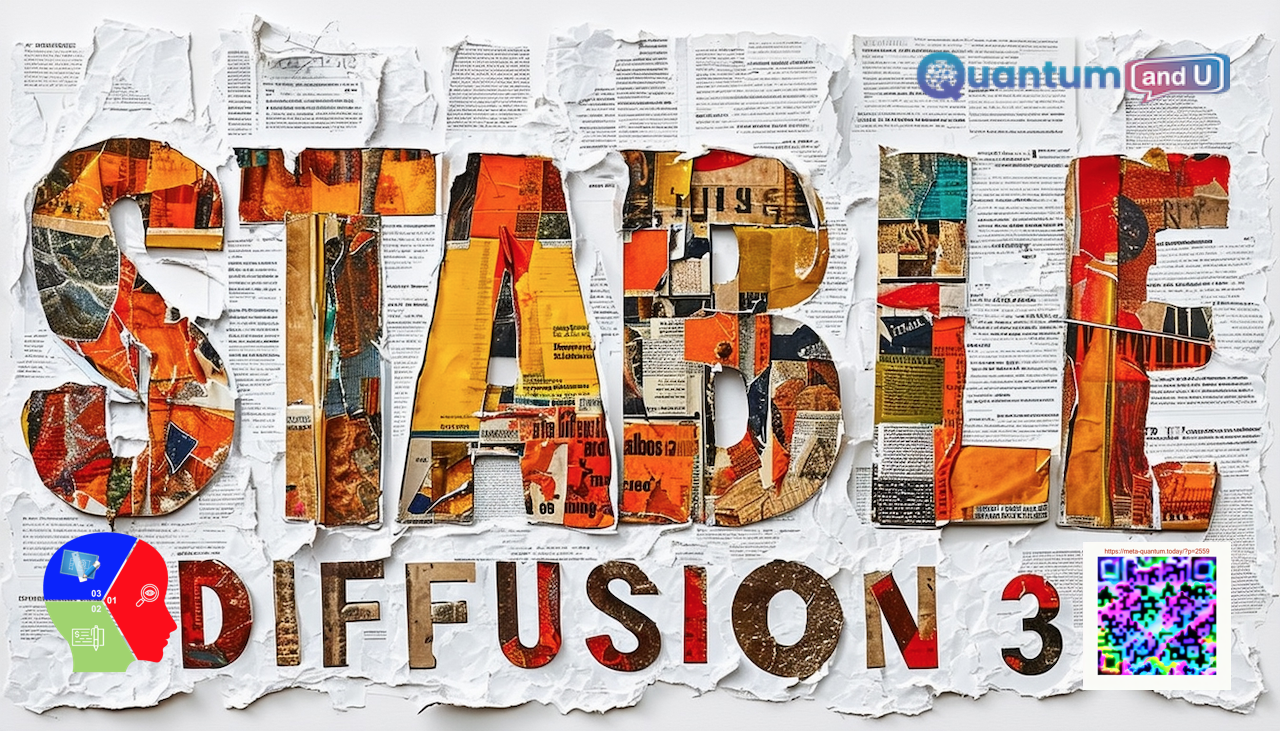
Introduction:
The YouTube review unveils a groundbreaking advancement in AI with the release of Stable Diffusion 3 by Stability AI. The reviewer discloses that they had prior access to the technology, emphasizing the significant leap it represents in AI image generation. Stable Diffusion 3 is hailed as the most capable AI image generator to date, surpassing even DALL-E 3 in prompt understanding and image quality. Notably, the model is set to be open source, promising accessibility and innovation in the field.
Stable Diffusion 3:
Stable Diffusion 3 by Stability AI is a recently announced text-to-image generation model that is taking the AI community by storm. It is considered a significant leap forward in this field, offering several improvements over its predecessors. Here are some key points about Stable Diffusion 3:
- New architecture: Stable Diffusion 3 uses a new diffusion transformer architecture, which is similar to the one used in the OpenAI Sora model. This architecture is specifically designed for image generation and is said to be more efficient and effective than previous architectures.
- Improved performance: Stable Diffusion 3 is claimed to offer significant improvements in image quality, spelling abilities, and performance with multi-subject prompts. It can also handle a wider range of prompts and styles than previous models.
- Open source: Unlike many other text-to-image models, Stable Diffusion 3 is open source. This means that anyone can access and modify the code, which could lead to even more innovation in the field.
- Accessibility: Stability AI is offering a variety of models with different parameter sizes, ranging from 800M to 8B. This means that there is a model available for everyone, regardless of their computational resources.
What Stable Diffusion 3 can do, example:
- Generate realistic images from text descriptions, such as “a cat playing with a ball of yarn” or “a majestic mountain landscape at sunset.”
- Create images in different styles, such as paintings, sketches, or photographs.
- Edit existing images, such as changing the colors or adding objects.
Overall, Stable Diffusion 3 is a powerful and versatile text-to-image generation model that has the potential to revolutionize the way we create and interact with images.



Video about Stable Diffusion 3:
Key Sections in the Video:
- Stable Diffusion 3 Unveiled: Stability AI releases Stable Diffusion 3, leveraging a diffusion Transformer architecture for superior performance in prompt understanding, image quality, and coherence.
- Unveiling Capabilities: The review showcases various examples generated by Stable Diffusion 3, highlighting its ability to adhere meticulously to prompts while maintaining aesthetic coherence. Notable examples include anime artwork, a cinematic photo, and surreal imagery, all crafted with impeccable spelling and detail.
- Comparison with DALL-E 3: A comparative analysis with DALL-E 3 demonstrates Stable Diffusion 3’s superiority in prompt coherence. While DALL-E 3 produces decent results, it falls short in terms of coherency and adherence to prompts compared to Stable Diffusion 3.
- Potential of Open Source Release: The review emphasizes the significance of Stable Diffusion 3’s open-source release, enabling further innovation and customization within the AI community. This move is lauded for democratizing AI access and fostering creativity.
- Technical Insights: Details regarding Stable Diffusion 3’s architecture, including its utilization of Transformer improvements and multimodal input acceptance, are discussed. The model’s potential for scalability and versatility is highlighted.
Impact of Stable Diffusion 3 on Southeast Asia’s AI Market:
Opportunities:
- Enhanced creativity and design: Creative industries like advertising, graphic design, and animation can benefit from Stable Diffusion’s ability to generate unique and high-quality visuals based on text descriptions. This can lead to faster content creation, exploration of new ideas, and personalized experiences.
- Boosting local content creation: Southeast Asia has a vibrant cultural scene, and Stable Diffusion can empower local creators to produce content that reflects their unique identities and stories. This can lead to the growth of regional content platforms and increased global awareness of Southeast Asian culture. exclamation
- Accessibility and affordability: Open-source nature and various model sizes make Stable Diffusion accessible to individuals and small businesses with limited resources. This can democratize AI image creation and foster innovation across different sectors.
- Personalization and marketing: Businesses can leverage Stable Diffusion to personalize marketing materials, product designs, and customer experiences. This can lead to increased engagement and conversion rates.
- Education and research: Stable Diffusion can be used for educational purposes, allowing students to visualize complex concepts and explore creative possibilities. Researchers can also utilize it for data augmentation and generating experimental visuals for their studies.
Challenges:
- Data bias and representation: AI models often reflect the biases present in their training data. This can lead to discriminatory or offensive outputs, particularly when dealing with sensitive topics like race, gender, or religion. Southeast Asian developers need to be mindful of these biases and ensure their models are inclusive and representative.
- Technical expertise: Utilizing Stable Diffusion effectively requires technical knowledge and skills, which might be limited in some parts of Southeast Asia. Building capacity and providing training programs will be crucial for wider adoption.
- Ethical considerations: The ability to generate realistic images raises ethical concerns surrounding misinformation, deepfakes, and potential misuse. Southeast Asian countries need to establish ethical frameworks and guidelines for responsible AI development and deployment.
Conclusion:
The review concludes that Stable Diffusion 3 is a significant advancement in AI image generation, surpassing all current models in prompt understanding and coherence. While other models like Midjourney v6 provide realistic results, Stable Diffusion 3’s open-source nature distinguishes it, fostering possibilities for innovation and creativity. The reviewer anticipates that 2024 will be marked by Stable Diffusion 3’s influence on AI image generation, indicating an exciting future in this domain.
In summary, Stable Diffusion 3 could notably impact the AI market in Southeast Asia, introducing new opportunities for creativity, innovation, and economic expansion. However, addressing challenges like data bias, technical expertise, and ethical considerations is essential to ensure its responsible and advantageous use in the region.
Take note that this is an initial evaluation, and the actual impact will depend on various factors, including specific government policies, cultural contexts, and the rate of technological adoption in each Southeast Asian country.
Takeaway Key Points:
- Stable Diffusion 3 by Stability AI is hailed as the most capable AI image generator to date, surpassing DALL-E 3 in prompt understanding and coherence.
- The model’s open-source release promises accessibility and innovation, democratizing AI access and fostering creativity.
- Stable Diffusion 3’s architecture enables scalability, versatility, and acceptance of multimodal inputs, setting a new standard in AI image generation.


